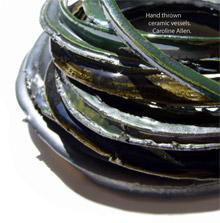Mary Ann Owoc (Mercyhurst University)
Although the appearance of a relative plethora of cord decorated ceramics in the Bronze Age immediately calls to mind notions of novelty and creativity, this contribution examines less the outcomes of that creativity, namely the pots themselves and their decorated surfaces, and more the process by which those outcomes came into being. A closer look at this interesting material form reveals layers of detail that provoke a critical inquiry into its real nature and its traditional archaeological definitions. The creation of cord, the execution of impressions and designs, the temporal environment of cord appearance and use, and the variety of decorated examples from particular sites in the British south-west can be examined as a way of exploring creative improvisation as an interface of active material properties, practiced human movements, social conventions, and particular conceptions and understandings of the world. It is also suggested that this creative process and its constituent elements exists in other acts of Bronze Age building which are variable and contingent, but still deeply rooted in traditional, meaningful histories of practice.


